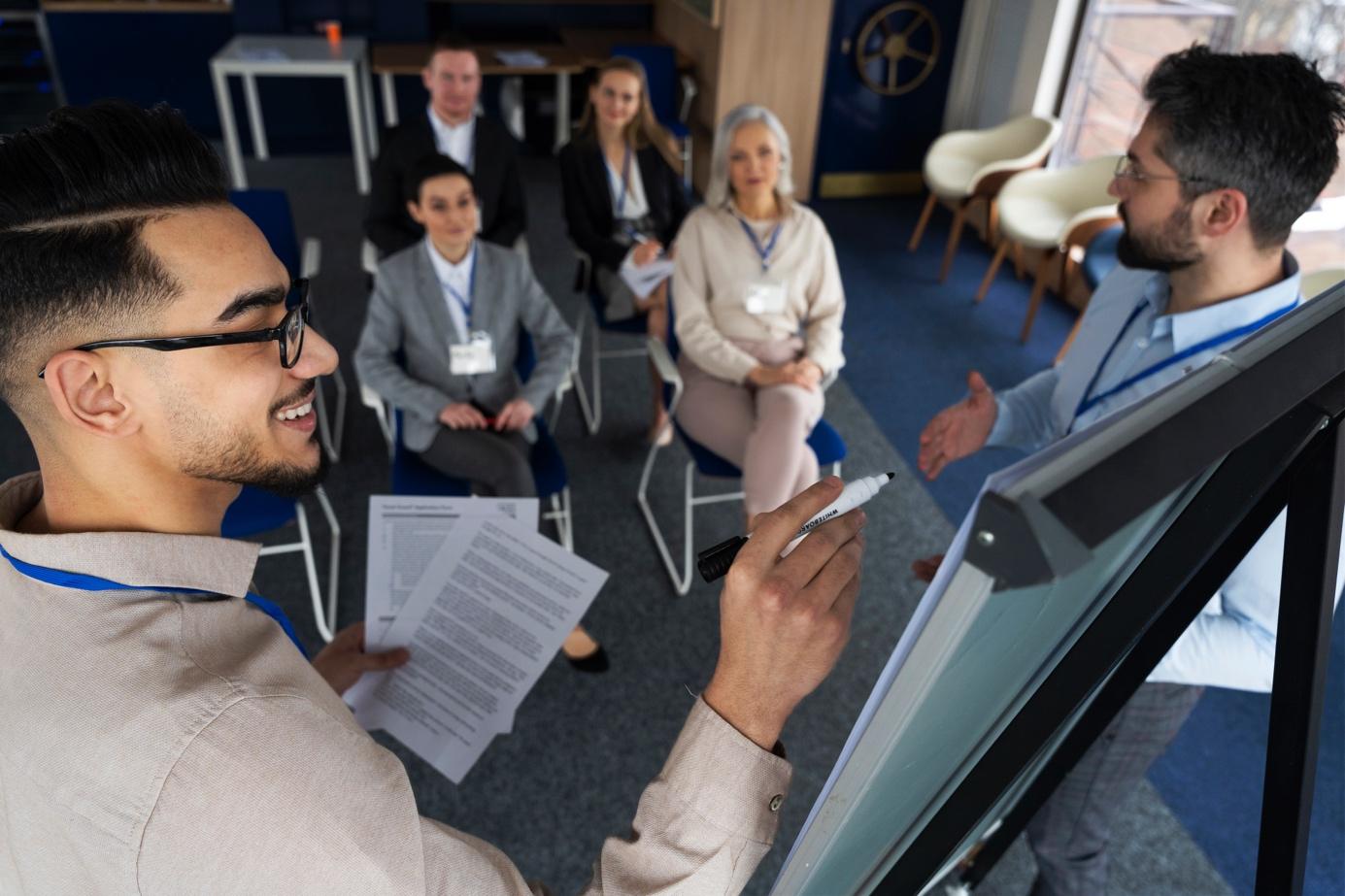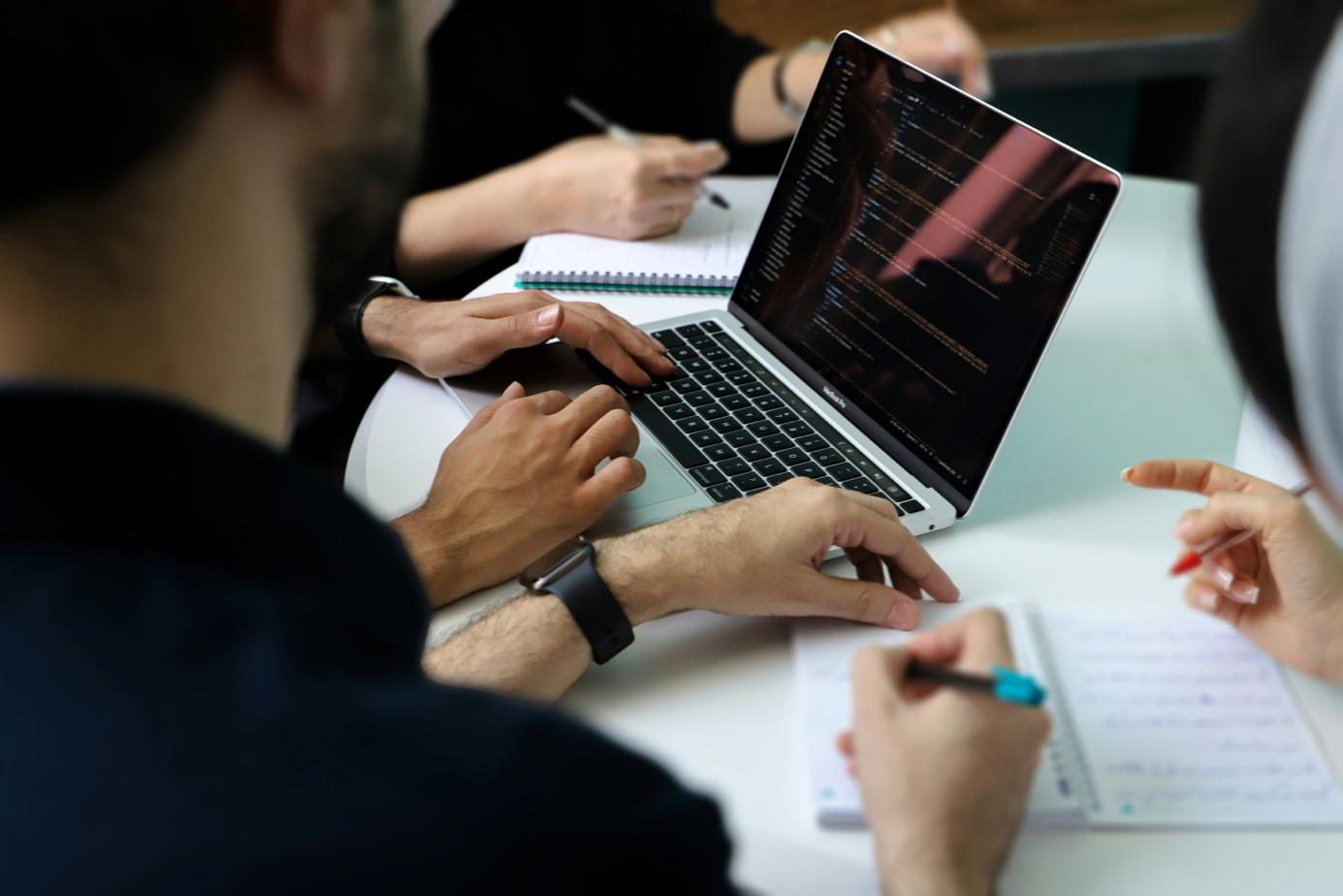Meeting between specialists: how to organize effective exchanges?

In business, meetings between specialists play an important strategic role. They make it possible to bring together a certain number of participants with specific key skills in order to promote exchanges of expertise, of solve complex problems And of stimulate innovation in a specific field. Whether it's engineering, technology or even marketing, these specific meetings offer a valuable framework for moving projects forward collectively and for facilitating decision-making.
Scheduling meetings between specialists requires careful preparation and effective follow-up. From the development of the agenda to the rental of the boardroom, including animation tools and methods, Formeret gives you all his advice for organize a meeting productive and relevant.
What are the objectives of a meeting between specialists?
The organization of a meeting between specialists meets several key objectives:
Sharing in-depth knowledge and recent advancements
This corporate meeting should be organized regularly. Its main objectives are to:
- Allow participants to update their knowledge and knowledge specific ;
- Sharing the latest advancements scientific, technological or even methodological;
- Facilitate the dissemination of best practices and strategic updates in order to reinforce the coherence of the company's actions.
Solving technical or scientific problems
Specialist meetings often take the form of problem-solving meetings. Indeed, they make it possible to call on collective intelligence and to mobilize several angles of analysis to deal with complex problems.
For example, as part of an R&D project, bringing together specialists will make it possible to combine expertise in biotechnology, data science or even regulation in order to unblock complicated situations.
Fostering interdisciplinary collaboration
The wealth of a meeting of this type comes in particular from the diversity of the profiles of the employees involved. An engineer, a marketing director and a data analyst do not have the same vision, but their collaboration can lead to the emergence of innovative solutions. These work meetings are therefore essential to promote innovation at the company level.
Establishing recommendations and making strategic decisions
These meetings are also an opportunity to make strategic decisions for the company. In fact, they offer a An environment conducive to reflection and the time needed to enable specialists to make important trade-offs, to decide on project directions or to establish operational roadmaps.
Planning and organizing a meeting between specialists

Whatever the type of meeting that you plan to plan (e.g.: back-to-school meeting, CSE meeting, Information meeting, commercial meeting, Kick-off meeting, stand up meeting, etc.), the success of this one depends largely on the quality of its preparation. This is all the more true in the case of a meeting between specialists, whose objectives are particularly strategic.
Select participants
Here, it's not about bringing together a large number of people, but the most relevant profiles in order to promote the quality of exchanges. In some cases, a meeting between specialists can even take the form of a one-to-one meeting.
Before sending out your invitations, it is therefore essential to set goals and to make a analysis of skills needs : this will allow you to identify the expert profiles that are essential for exchanges or for solving the problem.
Example: to solve an energy performance problem on an industrial site, a thermal engineer, an automation engineer and a maintenance manager will be called upon.
Prepare a specific agenda
A clear agenda, sent in advance, allows each participant to prepare. At a minimum, the agenda must include:
- Key issues to be addressed;
- The objectives set and associated with each key point;
- Expected speaking time for each topic.
The agenda will also serve as a structure for the facilitator to help him conduct the meeting effectively and reframe the discussions if necessary.
Choosing the meeting format and tools
The format will necessarily have an influence on group dynamics during the meeting. The choice must be made according to the objectives of the meeting, the complexity of the subjects discussed, but also the availability of the participants. In any case, keep in mind that each format has its advantages.
- They allow for more fluid interactions.
- Bringing all participants together facilitates and enriches communication, which is crucial in sensitive or complex discussions in this type of meeting.
- Holding in-person meetings is ideal for workshops, brainstorming sessions, or prototyping sessions, for example.
💡 Good to know : Rent a meeting room outside the company framework promotes concentration. Offering a dedicated environment makes it possible to limit distractions and maximize the involvement of all participants.
Remote meetings :
- Videoconferencing is the preferred format for its flexibility and accessibility.
- Online meetings facilitate the participation of experts who are geographically remote, without travel constraints.
- That said, the loss of attention is greater if the animation techniques are not rhythmic or interactive.
Hybrid meetings (mix between face-to-face and videoconferencing):
- The hybrid format makes it possible to bring together participants both on site and remotely, and can be very practical... provided you are well prepared.
- Indeed, it requires advanced logistics to ensure good technical coordination and manage the various types of interactions.
Organization of the meeting: the key steps

All types of meetings offer a different process depending on the objectives to be achieved. A crisis meeting, a kickoff meeting, a training meeting or even a CoDiR meeting, and of course, a meeting between specialists, will each have their own format.
Here are the steps to follow to conduct a specialist meeting:
Introduction
The introduction allows the meeting organizer to:
- Present the context of the meeting;
- Recall the agenda;
- Clearly define the issues;
- Specify the “rules of the game” (speaking time, order of interventions, etc.).
If some employees don't know each other yet, don't forget to schedule a round table to make presentations and start discussions in a more friendly atmosphere.
Exchange of expertise
The exchange of expertise is at the heart of this team meeting. Each participant can present their vision through the presentation of data or case studies, the sharing of experimental results or operational feedback.
Tip: use visual support (PowerPoint slides, data visualization, graphics...) to facilitate understanding and maintain the attention of the audience.
Discussion and debate
During this essential phase, specialists will compare their points of view. This can be a time to clarify disagreements, to highlight risks and opportunities, but above all to seek collective solutions.
Tip: In some cases, a neutral moderator may be essential to facilitate a productive meeting. It will help channel exchanges and stay the course.
Summary and concrete actions
At the end of the meeting, set aside time for open-ended questions: this sometimes helps to develop new ideas outside the framework. Before concluding, don't forget to summarize:
- the decisions taken,
- the solutions selected,
- the distribution of responsibilities and tasks,
- the next steps.
All of this should be noted in the meeting minutes.
What tools and methods should you use for your meeting?
You can rely on a set of tools to improve the effectiveness of your meeting, especially for remote or hybrid meetings:
- Technical support and data visualization : you can use tools like PowerPoint or Google Slides as presentation materials, Excel or Power BI for complex data visualizations, or FigJam or Miro to use interactive whiteboards and diagrams.
- Collaborative platforms to streamline exchanges and centralize documents: Notion, for example, facilitates project management and documentation sharing, while Miro allows you to do visual brainstorming and Slack to communicate in real time.
Some facilitation methods have also proven to be effective in promoting exchanges and debates. You can offer sessions of guided brainstorming based on a specific problem or interactive case studies based on concrete scenarios.
Follow-up of meetings and implementation of projects

The meeting between specialists is a good example of meetings for which a report is absolutely essential. It ensures that the exchanges and ideas shared during the meeting are in fact transformed into concrete actions.
The report should include:
- agenda items,
- the decisions taken,
- possible blocking points,
- the actions to be implemented (with a manager and a deadline),
- the next meetings.
Do not hesitate to set up a task tracking calendar. Organizing regular meetings makes it possible to ensure the progress of actions, to make adjustments based on feedback, but also to maintain the commitment of participants over the long term.
Conclusion: best practices to put in place
To ensure the success of your professional meeting, some best practices are required:
- Prepare participants in advance by sharing the agenda and working documents.
- Encourage everyone's participation in a balanced way. To do this, try to encourage open discussion, regardless of hierarchy, in order to free up speech and encourage new ideas.
- Respect speaking time and the duration of the meeting.
- Avoid digressions as much as possible. Use the agenda to refocus discussions on goals.
- Follow up seriously and disseminate the results.
La meeting between specialists is much more than a simple exchange. By bringing together the right experts around a common objective, it becomes a strategic moment for collective construction. Are you looking for the ideal setting to organize your next business meeting? Discover our modular rooms in Paris, perfectly adapted to your meetings between experts. Comfort, confidentiality and efficiency at the service of your strategic projects.
Find also our other types of rooms: